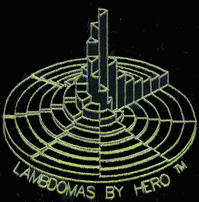Barbara Hero's Books
TRANSLATIONS ~ English to: 
Please read and agree to the copyright attribution requirements at the bottom of this page before utilizing any of the copyrighted information on this site. ヅ
The Lambdoma, Resonant, Harmonic Scale
(P, Q, R, S, T, U, V and W)
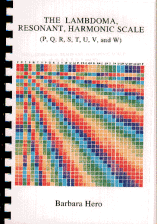
162 pp ~ In this book, Barbara Hero describes why the differences between the resonant Lambdoma harmonic scales P, Q, R, S, T, U, V and W and the tempered scales lead to new/old ways of realizing the powerful impact of the Lambdoma scale to unlock positive emotions. The sections include: The resonant Harmonic Scale; Visible Harmony; Forming Matter; Manifesting; Increasing the Quality of Our Lives by: Survival, Love and Belonging, Power, Freedom, and Fun. The conditions for quality in our lives become: Building trust and revealing ourselves and our values; Speaking and listening; Reading; Writing; Numbers; Life skills and Sharing self evaluation and how this can happen through following the laws of Lambdoma. PDF Link
Lambdoma Unveiled (The Theory of Relationships) Second Edition. Presentations, papers and letters.
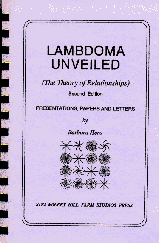
220 pp ~ Some of the subjects that are included in the first chapter "Music of the Grand Gallery" are: An ancient musical scale; Mystical experience in the Grand Gallery; Impact of harmonics of the Grand Gallery on levels of consciousness; Relationships between Earth's circumference and Grand Gallery dimensions; Alpha state and length of the Grand Gallery; Method of octave reduction; Translating dimensions into musical frequencies; Translating between planetary periods of rotation and musical frequencies by multiplication and inversion; The royal cubit becomes a module from the slant angle dimensions of the ramp height as a musical "E"; Time and Space; Galactic cycles; Questions and Answers. There are 10 additional chapters: "Awakening Consciousness Through Generating Patterns of Harmonic sound"; "A Letter to a Twelve Year Old" (An explanation of the Lambdoma in terms a 12 year old can understand); "Relationship between Consciousness, Sound, Music and Art"; "Teaching Mathematics by a Correlation of the Structures of Art and Sound"; "Abinatio" (a presentation given in a three day workshop); "Discovering your own keynote and attuning the Chakras with sound"; "Drug free art" (Drug rehabilitation therapeutic aspects of the Lambdoma speculating on why the sounds unlock emotional responses including reactions to the sounds made in the King's Chamber of the Great Pyramid of Egypt); "Healing with sound"; "The Iamblichus Array as a Transformation of Mapping from Ratios onto Musical Intervals" (Origin of the Lambdoma) and "101 Ways to Use the Secrets of the Lambdoma". PDF Link (38 mb); ORIGINAL PDF uncondensed from author (75mb)
The Glass Bead and Knot Theory of Relationships
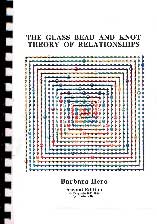
80 pp ~ This small book was stimulated by a reading of Hermann Hess' "Magister Ludi, the Glass Bead Game", and was compiled as a brief guide to those who wish to apply the relationships between dimension (wavelength) and the harmonic intervals (frequencies) of music. The cover illustration depicts an ordering of harmonic relationships which lead to an example of a simple construction of a Lambdoma necklace. Another application of Lambdoma theory is in weaving, and yet another is in musical time signatures related to the ratios of musical keynotes which might help musical compositions become even more harmonious. (Item AT4 side 2). Charts, showing translations of Time in seconds, minutes, hours, days years and light-years, into musical frequencies, as well as Dimensions in inches, feet, meters and miles, might help others find their own correspondence to our particular universe. PDF Link
The Sub-Conscious Speaks; with Lambdomas
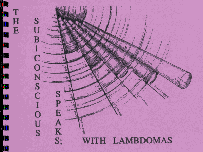
88 pp ~ "Contacting the Sub-Conscious, or Subjective mind, without loss of conscious identity has long been sought. This feat here has unquestionably been accomplished. The contents of the book proper belong entirely to the author's Subjective mind. Yet at no time was there a loss of conscious control and direction, nor was the author at any time in any other than a perfectly normal condition". Chapter titles include: Mind; Effect of Mental Attitudes of the Conscious Mind upon the Sub-Conscious; Fear; Health; Confidence in Self – Faith in God; Using Conscious Thought in a Definitely Creative Manner; and Success – Failure. PDF Link
Music Graphs

Barbara Hero draws upon her insight and wisdom in both art and mathematics to apply visual symbolism to relate the qualities of the Pythagorean numbers 1 – 10 to her 16 Lambdoma Laws of Harmony. Each page has a visual "Music Graph" as one of the ways of interpreting the symbolism of number. "The Theology of Arithmetic" by the neo-Pythagorean Iamblichus is one of the references for this work. (Iamblichus brought forth the Lambdoma again in 200 AD). PDF Link
Eyes + Ears = Ideas
215 pp ~ Barbara originally presented this information is slide format. That is the basis of the International Lambdoma Research Institute (ILRI) link in the footer of each page of this legacy web site. We've included the PDF of this book here, so that you may view the images in a more suscinct and enlarged way. However, we encourage you to look through the presentation! This PDF is sizable at 64.56mb.
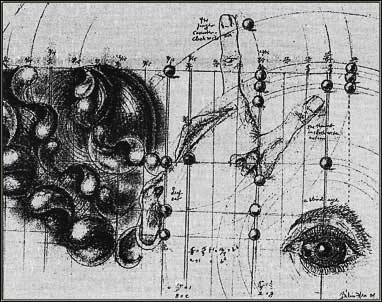 Barbara created all of the art within the book (without a computer) in
the early 1970's, attempting to visualize the shapes of sounds, based upon the model of the Lambdoma grid. The tools were only compass, straight edge, pen and
colored markers. Most importantly, it only took a willingness to experiment with wavelengths of sound, according to the ratios imbedded in the Lambdoma
array. These ratios bear a one-to-one relationship to specific musical harmonic
intervals. Any given length may be divided into one-half to one-sixteenth
segments, which include a scale of eight harmonic musical intervals from P, Q,
R, S, T, U, V, and W, or from A to Z of twenty-six micro tonal intervals. OPEN Barbara's Presentation or download PDF Link
Barbara created all of the art within the book (without a computer) in
the early 1970's, attempting to visualize the shapes of sounds, based upon the model of the Lambdoma grid. The tools were only compass, straight edge, pen and
colored markers. Most importantly, it only took a willingness to experiment with wavelengths of sound, according to the ratios imbedded in the Lambdoma
array. These ratios bear a one-to-one relationship to specific musical harmonic
intervals. Any given length may be divided into one-half to one-sixteenth
segments, which include a scale of eight harmonic musical intervals from P, Q,
R, S, T, U, V, and W, or from A to Z of twenty-six micro tonal intervals. OPEN Barbara's Presentation or download PDF Link
